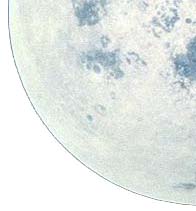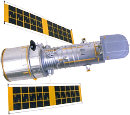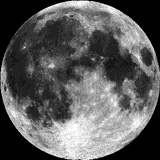Have scientists discovered our Moon’s origin?

Scientists have devised four major theories for the moon’s beginning.
The fission theory states that the moon long ago split off from the spinning Earth, like mud flung from a bicycle wheel. Some say that the Pacific Ocean basin is the scar that remains from this loss of material. There are four distinct remains from this loss of material. There are four distinct problems with this theory. First, today's Earth and moon do not have nearly enough circular motion for fission to ever have occurred. Second, although a moon splitting off from the Earth would be expected to orbit directly above the equator, in actuality the moon's orbit is always tilted between 18 and 28 to the Earth's equator. This is the reason why the moon appears higher or lower in the sky during different seasons. Third, while the fissioned moon was moving outward from the Earth, gravity would have pulverized it into Saturn-type rings. Fourth, moon rocks are chemically different from the equivalent material on Earth. It does no appear that the moon came from the Earth.
According to the capture theory, gravity brought the moon into permanent Earth orbit when it once wandered too close to Earth. The main problem in this theory is the low probability that two large space objects would pass each other so closely. Another problem involves the actual “capture” mechanism-it simply wouldn't happen! Instead, the moon would continue on its journey. We have often sent space probe “fly-bys” to other planets and they are not captured but instead are thrown outward with great speed, as in a crack-the-whip game. Finally, capture doesn't really qualify as an origin theory since it assumes the moon's prior existence.
The third theory has several names: condensation, nebular contraction, or accretion. It proposes the concurrent formation of both the Earth and moon from clouds of space material. As a result, the new moon “just happens” to circle the Earth. The main assumption here is that space material will actually fall together into a big lump due to gravity. Force calculations rule out such a collapse unless the cloud of material is already quite dense. Present-day dust clouds observed in space are rarely this dense, and most are spreading outward.
The fourth lunar-origin theory, very popular today, calls for a collision between the early Earth and another large planetary object. The impact resulted in an orbiting cloud of debris that eventually grouped itself into the moon. Some critics of this theory believe that such a giant impact would totally melt the Earth's crust. Others question the probability of another object hitting the Earth with the precise speed and direction needed to result in the formation or the moon. Some computer models show that such a collision would result in two Earth moons rather that just one, or even a Saturn-type ring. The main reason for promoting the collision idea appears to be that none of the other lunar-origin theories work.



It was hoped by many experts that the manned visits to the moon from 1969 to 1972 would provide definitive answers to the lunar-origin question. Instead, many new questions were raised, and the origin of the moon remains a mystery to secular science. One common idea in each of the four “natural” theories is that the moon formed by slow, random processes.
Scripture is in direct contrast to such reasoning; the moon was created suddenly and from nothing.
By the word of Yahweh the heavens were made,
And by the breath of His mouth all their host. —Psalms 33:6 LSB
Then God said, “Let there be lights in the expanse of the heavens to separate the day from the night, and they shall serve as signs and for seasons, and for days and years; and they shall serve as lights in the expanse of the heavens to give light on the earth”; and it was so.
God made the two great lights, the greater light to govern the day, and the lesser light to govern the night; He made the stars also. God placed them in the expanse of the heavens to give light on the earth, and to govern the day and the night, and to separate the light from the darkness; and God saw that it was good. And there was evening and there was morning, a fourth day. —Genesis 1:14-19 NASB
By faith we understand that the worlds were prepared by the word of God, so that what is seen was not made out of things which are visible. —Hebrews 11:3 LSB
Author: Dr. Donald B. DeYoung - adapted from Astronomy and the Bible: Questions and Answers, 2nd Edition (Grand Rapids, Michigan: Baker Books, 2000), 176 pp.
Copyright © 2000, Films for Christ, All Rights Reserved—except as noted on attached “Usage and Copyright” page that grants ChristianAnswers.Net users generous rights for putting this page to work in their homes, personal witnessing, churches and schools.

